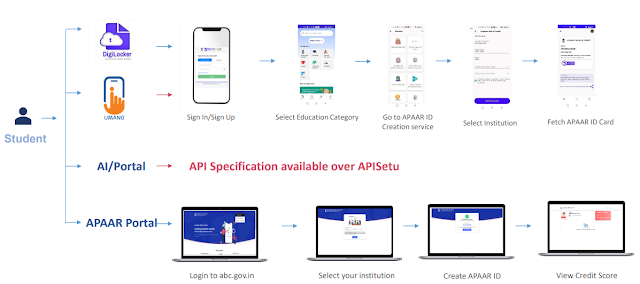Unlocking Academic Success:
The Power of Academic Credit Banks and the National Educational Policy
In the dynamic landscape of education, where every student aspires to climb theladder of academic success, the role of Academic Credit Banks and the NationalEducational Policy (NEP) cannot be overstated. In this comprehensive guide,impact of Academic Credit Banks and their alignment with the NEP, showcasing thepivotal role they play in shaping the educational journey of students across the globe.Understanding Academic Credit Banks
What are Academic Credit Banks?
Academic Credit Banks are innovative systems designed to facilitate the seamlesstransfer of academic credits. Essentially, they act as repositories for earned academic credits, allowing students to transfer their credits between institutions effortlessly.
This process fosters flexibility in academic pursuits and ensures that students' hard workis recognized and honored, irrespective of the institution.
1. Secure and Unique Identification:
Advantages of Academic Credit Banks and NEP Alignment
1. Flexibility in Education
The convergence of Academic Credit Banks and the NEP fosters a learning environment characterized by flexibility. Students can tailor their academic journey based on personal interests and career aspirations, leading to a more engaged and empowered student body.
2. Recognition of Diverse Learning Experiences
One of the significant advantages of this alignment is the recognition of diverse learning experiences. Students who engage in non-traditional learning methods, such as online courses or internships, can have their achievements acknowledged through the credit bank system. This inclusivity promotes lifelong learning and skill development beyond the confines of traditional classrooms.
3. Global Mobility
The seamless transfer of academic credits facilitated by Academic Credit Banks enhances global mobility for students. This is particularly beneficial for international students or those seeking diverse educational experiences. The NEP's global outlook aligns perfectly with this, creating a bridge for students to explore educational opportunities worldwide.
Overcoming Challenges
Addressing Concerns and Misconceptions
While the alignment of Academic Credit Banks and the NEP presents a promising future for education, there are concerns and misconceptions that need addressing. Transparency in credit transfer policies and continuous dialogue between educational institutions are crucial to ensure a smooth transition and implementation of these systems.
Conclusion
In conclusion, the fusion of Academic Credit Banks with the National Educational Policy is a monumental step towards a more flexible, inclusive, and globally relevant education system. By recognizing and celebrating the diverse learning journeys of students, we pave the way for a future where academic success knows no bounds


No comments:
Post a Comment